Inspiring children’s curiosity and creativity by weaving tidbits of science and other knowledge into fun stories of (mostly) ordinary life and life’s pop-up learning moments
“I don’t like math.” “Biology is boring.” Sound familiar? These are the sounds of the dreaded SASS (“Science Avoidance Study Syndrome”) disease.
And SASS doesn’t just afflict young children, by the way. Teens have been heard saying: “Why should I sign up for physics? I’m not a nerd.” Some adults join them: “I never could get what understanding chemistry can do for me.”
May we suggest BioFables books as a remedy for SASS ?
Mischief is inevitable with smart seven-year-olds, as the Maloney twins amply demonstrate when the famiy visits places as far away as Yellowstone National Park and at their own backyard vegetable garden in suburban Chicago.
An extra dimension of the BioFables stories is the mysterious extremophile nature of the twins, revealed in extreme circunstances as the stories unfold. Not that the adults around them believe it. Except, perhaps, for Grandpa Mike. And he keeps his thoughts to himself…mostly. (Everyone knows that only some microbes of the gazillions of them on earth can be classified as extremophiles, right?) Please be aware that this is BioFables’ ONLY departure from valid science.
Seven BioFables titles have been published so far. The first six books have been recently revised, with updated indexes and Helpful Hints introductions in their second editions. Book seven reflects the updates of the previous books’ second editions. All books are in full color, include scores of explanatory diagrams and photos, and about 100 (give or take) quick pop-up lessons in various subjects within the major Sciences, Humanities, and Values/Behaviors categories. Read more about these three categories under the background heading below the images.
Each BioFables book has its own home page. Click on the image of any of the seven books below to get a bird’s-eye view of each book’s story. Every page on this BioFables website also links to each book’s home page. Just click on Series 1 Book List (top tab) for a drop-down list.
 |
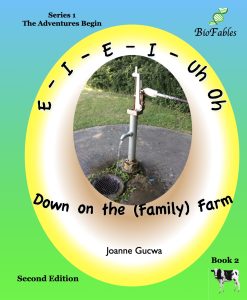 |
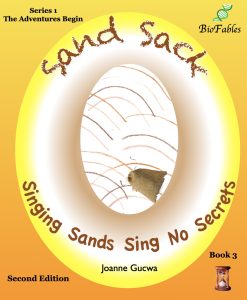 |
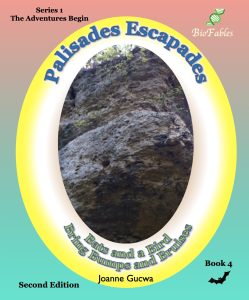 |
 |
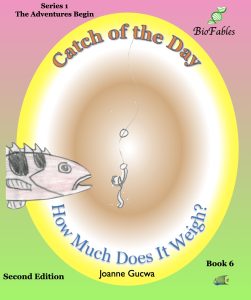 |
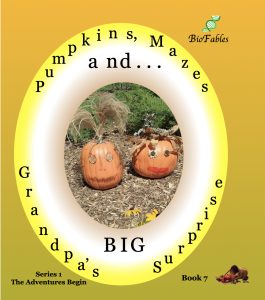 |
BACKGROUND
The initial BioFables concept was to be a series of fun children’s stories featuring Science, or STEM (Science, Technology, Engineering, Math) topics to make them less inimidating. We all know that sciences alone “do not a balanced life make;” rather, they are interconnected with two other major categories of learning: Humanities and Values/Behaviors that contribute to everyone’s unique character.
So, Why Science? Briefly, Science skills are more in demand than ever, from Biology (e.g. discovering new drugs or developing new vaccines) to Math and IT (everything computing) to Physics and Chemistry. BioFables stories will help your children become aware of different science principles and their practical applications in real life, a real advantage when they encounter STEM subjects in school. Pop-up science lessons also lay the foundation for developing critical thinking skills.
What About Humanities? While Science is focused on facts, Humanities are focused on relationships, (human relationships, as the word “humanities” implies), such as those encountered in work and careers, culture (including various aspects of the creative pursuits we call arts). Humanities also encompass relationships with our external environment, including pets and other animals, plus the extended environment of Earth and space.
How Do Values/Behaviors Fit? Values are a person’s internal sense of proper actions or behaviors. Children develop their internal sense of proper Behaviors by observing others’ behaviors and learning what’s proper (or not!) from their parents, other family members, teachers and people around them. BioFables stories offer numerous examples of proper (and occasionally not-so-proper) behavior.
BIOFABLES BOOKS ARE FOR EVERYONE!
Multi-Generation Natural Learning and Teaching. Speaking of everyday life, you probably encounter dozens – if not hundreds – of learning opportunities to pass on to your children or jog your own memory. Using these everyday events as they pop up is a time-honored way to teach or to reinforce valuable knowledge on how the world works (including the people in it) . BioFables books adapt this natural learning setting through stories starring 7-year-old Melody and her twin brother Mallory. Their parents, Grandpa Mike and other family members and friendly people they encounter offer factual tidbits and quick lessons, as they arise naturally.
AGE GROUPS. BioFables books are written for children, but their reach extends much further. The green circles in the lower half of the illustration at the top of each page offers five (approximate) age groups for enhance your children’s learning enjoyment of BioFables stories. Here are some ideas.
- Ages 7-8: Read to children
- As a parent or teacher, you can have fun tapping into your own inner thespian while reading BioFables to the children in your care. Even if 7- or 8-year-olds can’t quite grasp all the science or social principles involved, your playfulness and enthusiasm will surely be passed onto them. And that’s the first step in opening the window to learning.
- Ages 9-10: Read with children
- The fun is multiplied as your child or children learn to tap into their own inner thespian by following your example. Their enthusiasm for certain topics are clues for you to ask questions, explain and further explore those areas.
- Ages 11-12: Children read to you
- The tables are turned, and you are now the student. How fun is that…for both of you?
- Ages 13-14: Read to younger children
- Older siblings can step into your role (and you can go back to doing your own thing while watching the interactions and playing the trusted sage when there’s a question). How fun is that?
- Ages 15+: All reading choices
- BioFables books are designed to be enjoyed by those who read them at different ages and at different levels of education. You’ll understand if you’ve re-read children’s classics such as 20,000 Leagues under the Sea or Little Women twenty or 50 (!) years after you’ve first encountered them.
THIS BIOFABLES WEBSITE is an evolving, free resource designed to supplement the BioFables books themselves. Please visit Site Tips to learn more.
